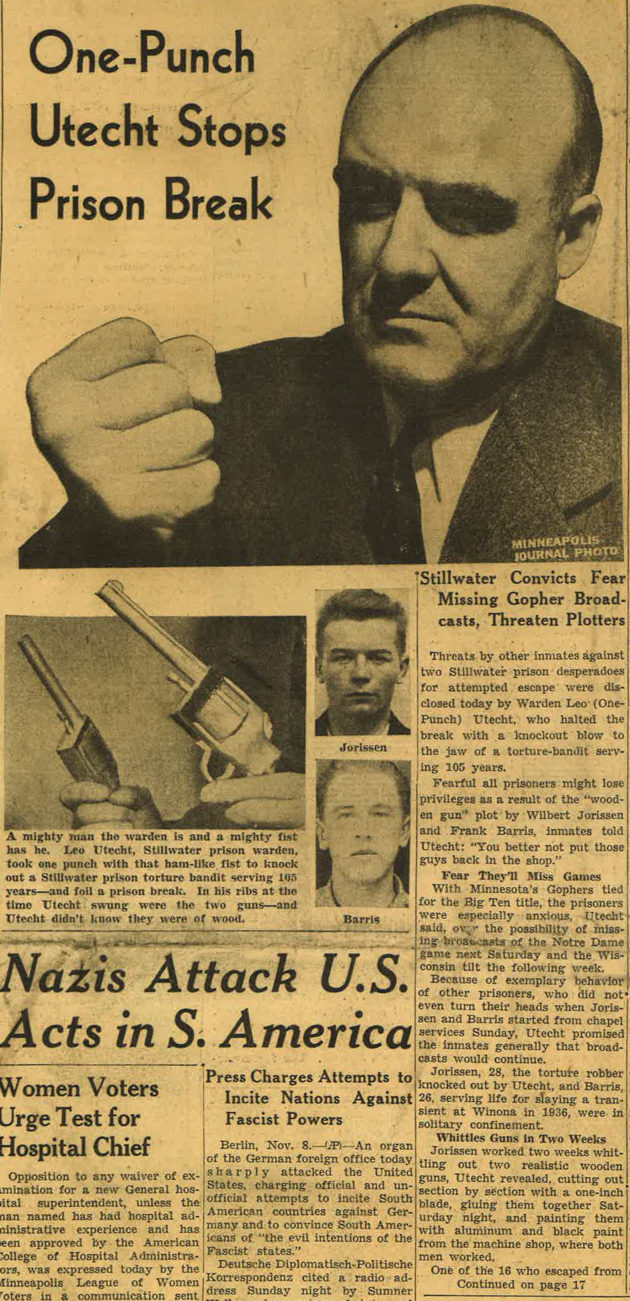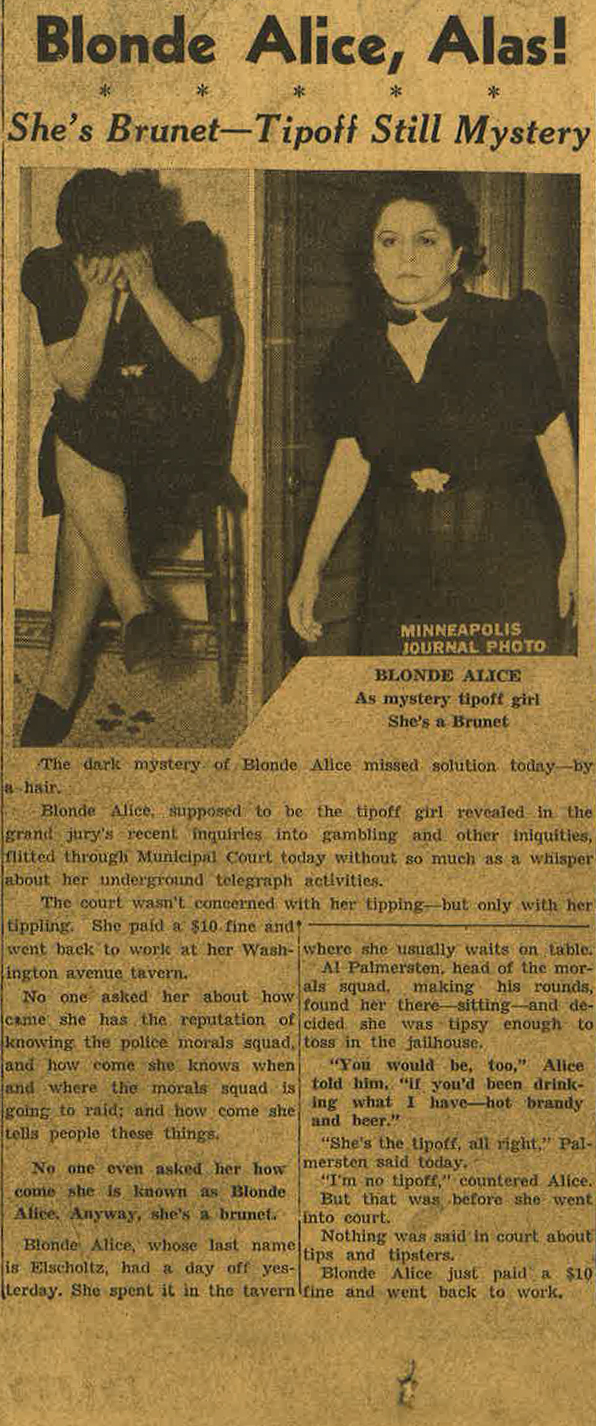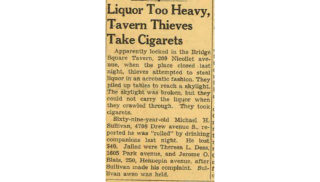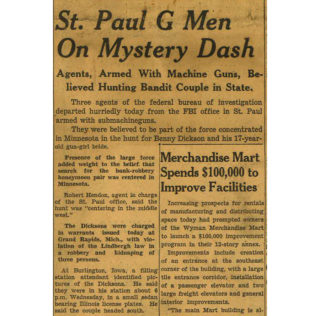Last year, when we pulled up the floorboards of my house in Minneapolis, I found some good old fashioned D.I.Y. insulation: newspapers.
It seems that some time in early 1939, a previous owner had attempted to keep the house warm by laying down issue after issue of The Minneapolis Journal. The Journal went on to merge with the Minneapolis Star later that same year, becoming the Star-Journal, which is now, of course, the Star Tribune.
I don’t know much about the homeowner at the time, other than that he or she was thrifty. But the papers do tell me one personal tidbit: Someone in the house had itchy skin. A home remedy recipe for eczema was clipped right out of one paper, leaving just the title. (That’s an eerie glimpse of the clues we leave behind.)
There are plenty of fascinating gems in the crinkled, yellowed, crackling pages, but here are some of my favorite finds.

“One-Punch Utecht”
“A mighty man the warden is and a mighty fist has he.”
The story says that Warden Leo Utecht of the Stillwater prison thwarted two inmates’ escape plan with a single punch, according to the Journal. The prisoners had carved realistic-looking guns out of wood and tried to threaten Utecht to release them, but — not even knowing the guns were fake — he swung at them instead. The attempted escapees were Wilbert Jorissen, a “torture-bandit” serving 105 years, and Frank Barris, who was serving life for murder.
There’s another twist to it: Apparently the rest of the prisoners were so upset that Jorissen and Barris’s attempted escape would threaten their radio privileges, the two had to be kept separate from the rest of the population. The prisoners didn’t want to miss listening to the Gophers play Notre Dame. (Minnesota went on to win the Big Ten title that year.)

The mystery of Blonde Alice
Meet Minneapolis brunette Alice Elscholtz — known around town as “Blonde Alice” — who had a curious reputation for tipping off people in advance of raids by the police “morals squad.” But she wasn’t always so lucky with the timing: The Journal article covers her appearance in court over a drinking citation. A police officer hauled her in after finding her drunk in a tavern.
”You would be, too,” Alice told him. “If you’d been drinking what I have — hot brandy and beer.”
Why was she called Blonde Alice? The Journal wondered about that, too.

An “acrobatic” burglary
Here’s some sage advice for criminals from 1938: When attempting to rob a bar, make sure you have the muscle to carry out the liquor
A group of burglars broke into a Minneapolis tavern on Nicollet and tried to escape through the skylight by stacking up tables and climbing out. (Unclear how they broke in in the first place.)
Apparently the liquor was too heavy, though: They only made it out with cigarettes.

The war against freckles?
This flashback comes not from the Journal, but from the American Weekly, which was also fortuitously in my floor. It was a weekend newspaper supplement that went bust in 1966.
The article promises that these “transparent oiled-silk” helmets were the latest must-have in the “war of the fair sex against freckles.” As the caption on the photo notes, they are “not at all unbecoming” — which is certainly one opinion.
The article claims they had been “popular at beach resorts for several seasons.” If anyone has a picture of a relative actually wearing one of these, please let me know.

The bed of the future
“The Machine Age is going to be move into the bedroom in a big way.”
Who doesn’t love wildly incorrect predictions of the future? This elaborate dashboard of a headboard was touted as the next big thing — complete with built-in rotary phone. Looks restful.

The “gun-girl bride”
Here’s the Bonnie and Clyde you haven’t heard of: Benny and Stella Dickson. The Topeka-born bank robbing duo terrorized the Midwest in the 1930’s, and at one point, the search for them centered in Minnesota, where Benny’s family had a cabin. That led to the stellar headline: “St. Paul G Men on Mystery Dash.”
This article came out just a few weeks before Benny drove his car straight through a line of police officers in Kansas, dodging 48 shots. The pair eluded police for another few months until the spring of 1939, when Benny was shot by FBI agents outside a hamburger shop in St. Louis.
Stella was arrested a few days later, sentenced to 10 years in prison, and was out by the time she was 26. According to the Topeka Capitol-Journal, she “worked as a grocery store clerk and lived a hermit-like life in Raytown, Mo.” She died in 1995 at age 72.

A mysterious, loaded stranger from South Dakota
News out of Watertown, S.D.: A man was found wandering, “apparently dazed,” with over $2,000 on him. With inflation, that’s over $30,000.

“Pow!”
It’s not every day that falling down gets your picture and your name in the paper. Young John Potulny attempted to skate a figure-eight for the Journal’s photographer, and landed on the ice.

“Mussolini and Hitler at it again”
Squeezed to the side of the all-important failed figure-skating spread is a brief column about the trouble brewing in Europe. A year before the start of World War II, the paper took a more lighthearted tone with developments in Europe than might have been warranted.
